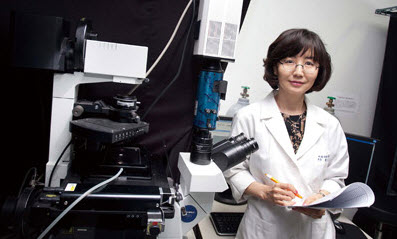
Professor MOOK Inhee
On March 15, a team of Seoul National University medical professors led by Professor MOOK Inhee announced in the esteemed life sciences journal, Autophagy, that they have discovered a mechanism in the brain that regulates the substance which triggers Alzheimer’s disease.
In 2013, scientists at the Stanford University School of Medicine showed that beta amyloid is a protein fragment that destroys synapses before it clumps into plaques that lead to nerve cell death.
The SNU team built upon this research. KIM Su-Kyoung, one of the researchers in the SNU medical team explained, “The disease is triggered when amyloid proteins exceed the threshold deposits. Our team discovered a mechanism that can regulate the amyloid accumulation by figuring out how the gamma secretase, an essential protease in the generation of beta amyloid, works.”
The research revealed that if the scientists implant beta amyloid proteins into astrocytes, glial cells of the central nervous system, then the release of insulin will increase.
Their achievement was featured in the Federation of American Societies for Experimental Biology Journal. Alzheimer’s disease is a progressive mental deterioration that slowly destroys memory and thinking skills, and it is the most common form of dementia, affecting up to 70% of all people with dementia. It affects more than 35,000,000 people worldwide today. So far, scientists and researchers have sought out ways to detect the early stages of the disease and to develop applicable treatment.
“We have laid out the groundwork necessary to develop a treatment that will act as a catalyst in decomposing beta amyloids,” Professor Mook said. This will be a major step in slowing down the process for Alzheimer’s disease, if not an invaluable insight into discovering a cure.
Written by Ho Jung Annie Hwang, SNU English Editor, annieohan@snu.ac.kr
Reviewed by Professor Travis Smith, Department of Asian Languages and Civilizations

